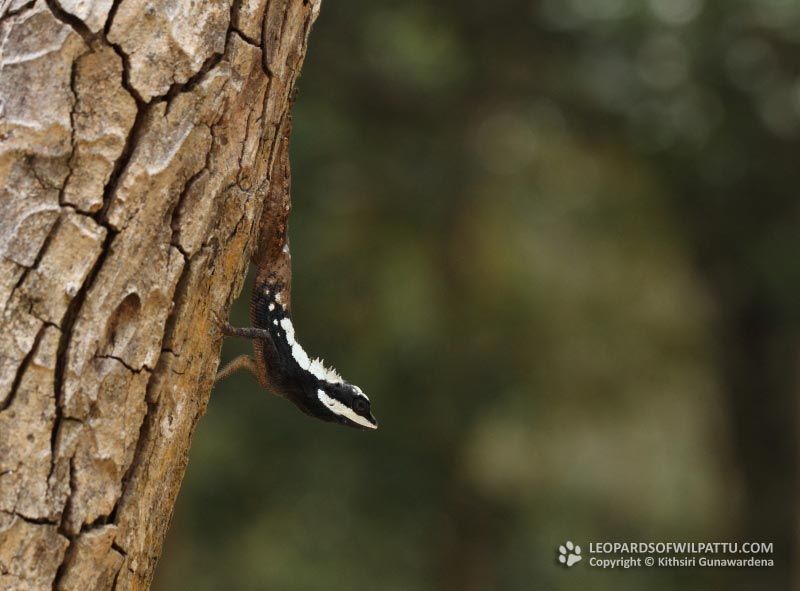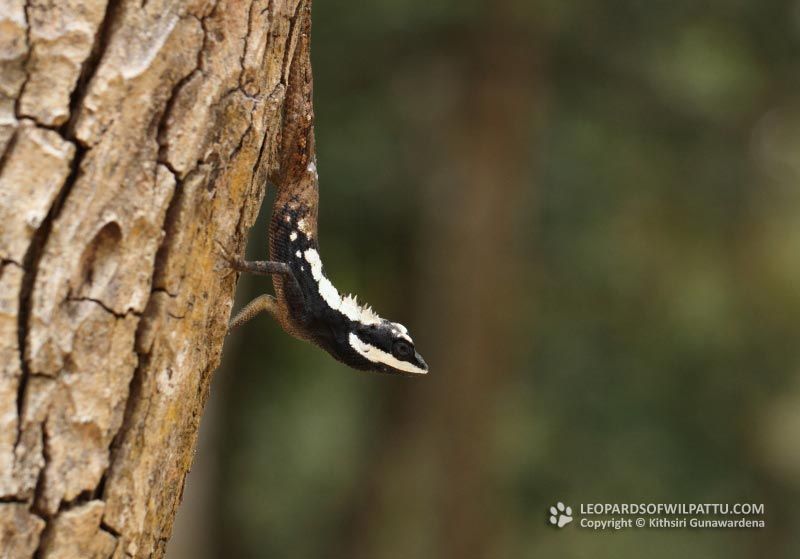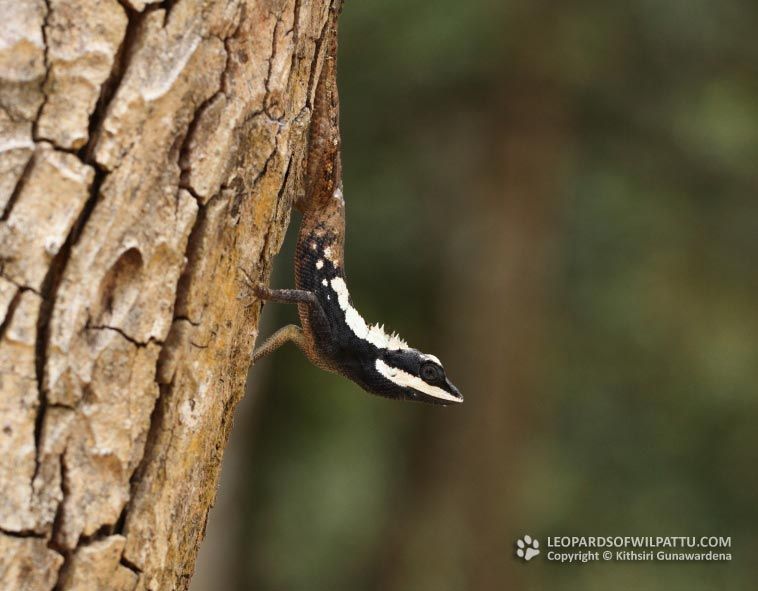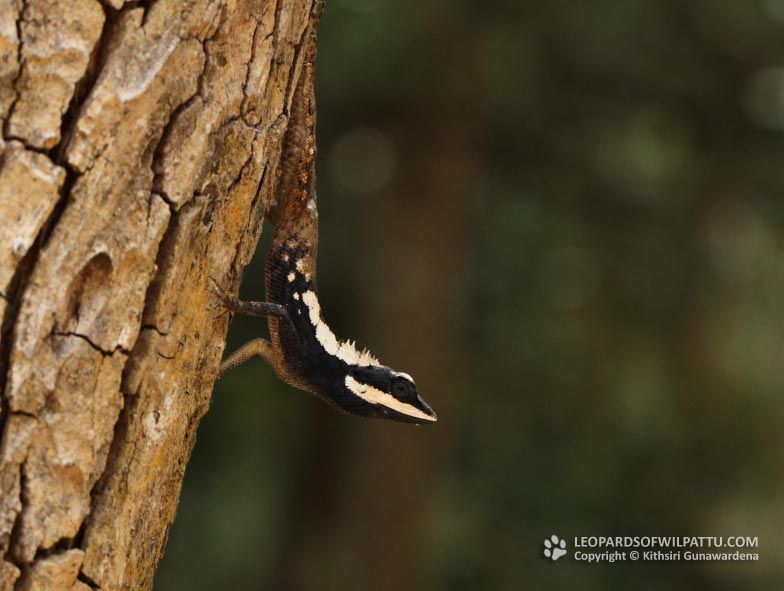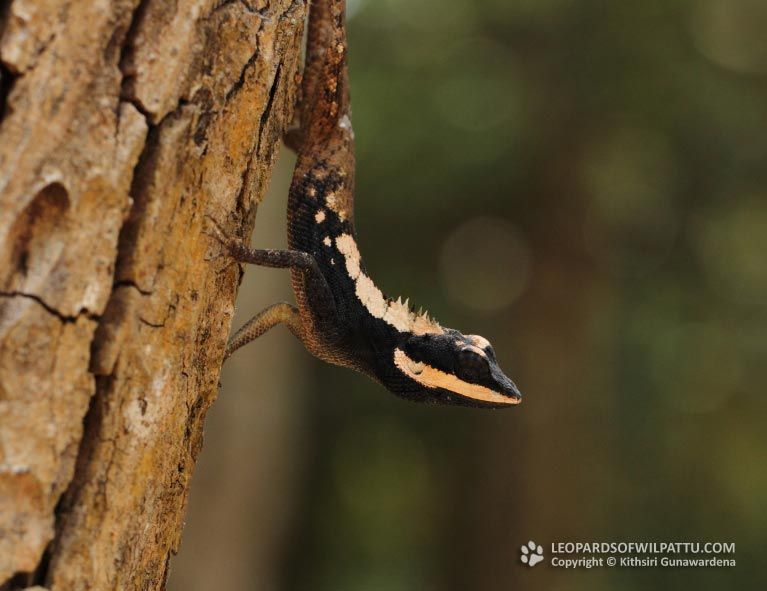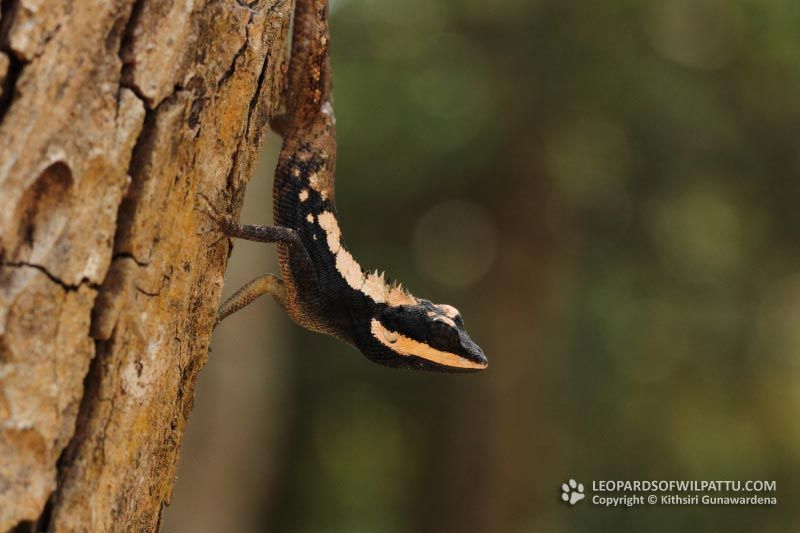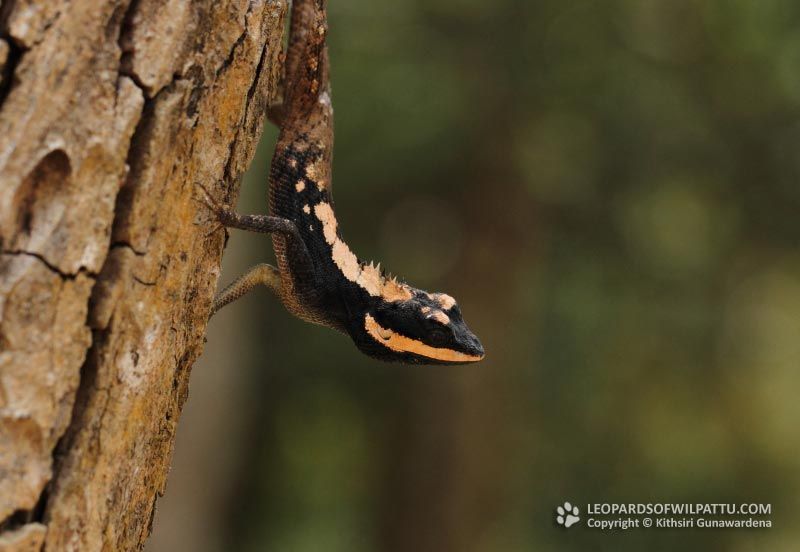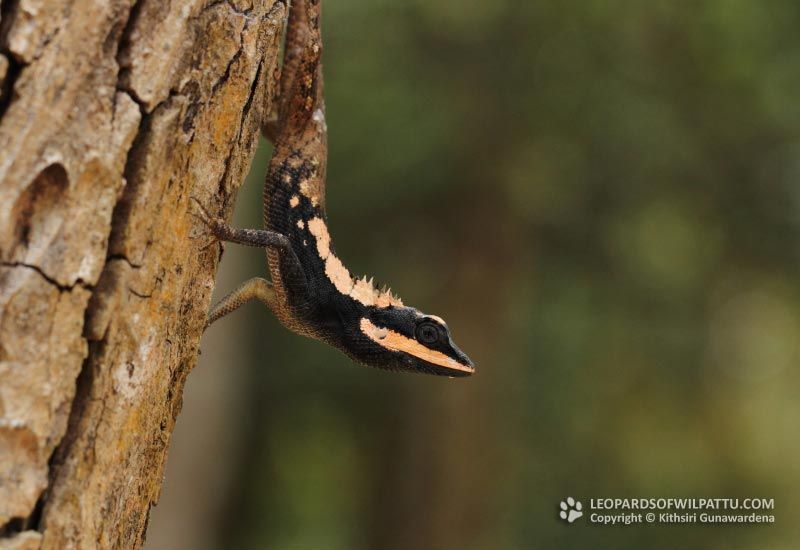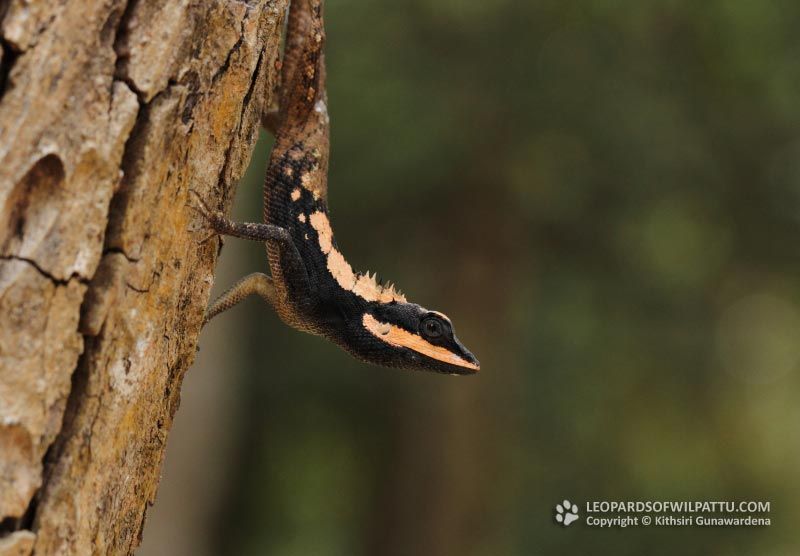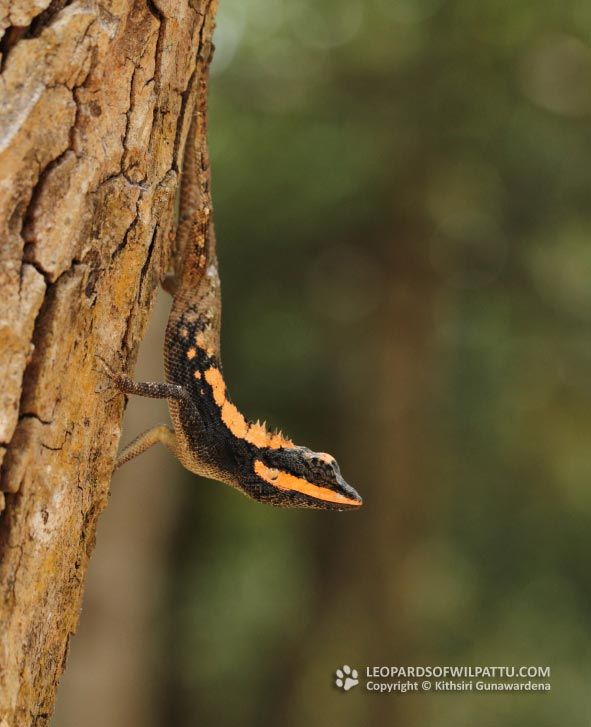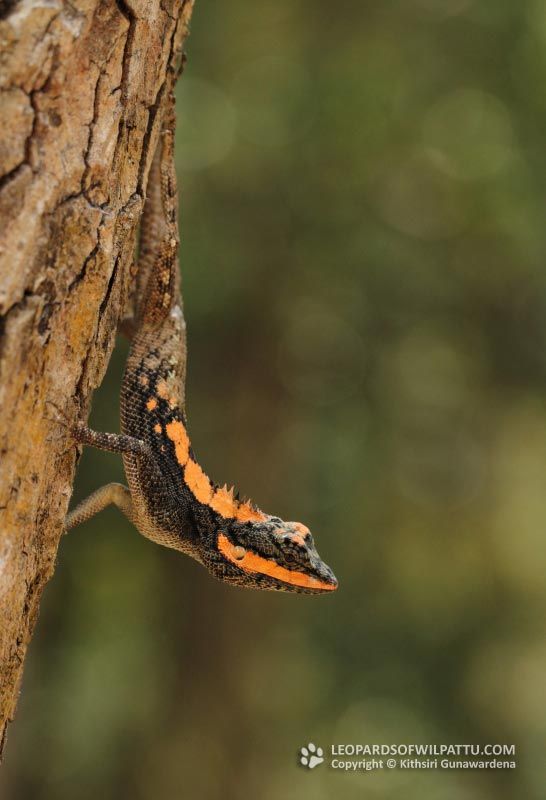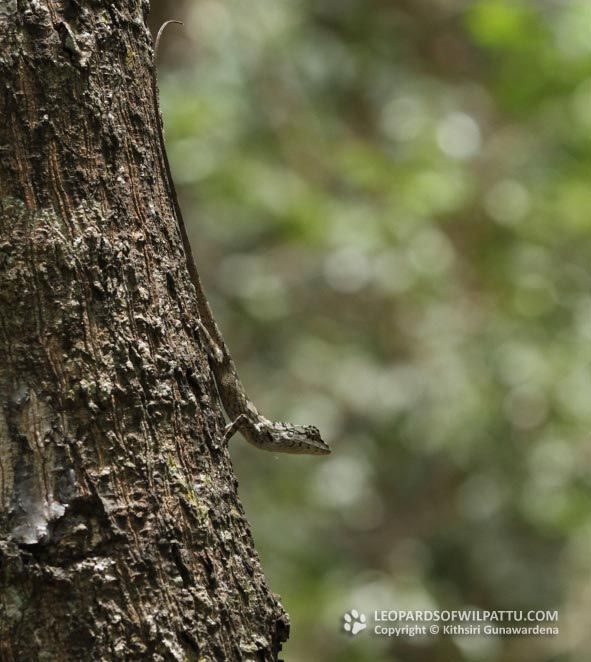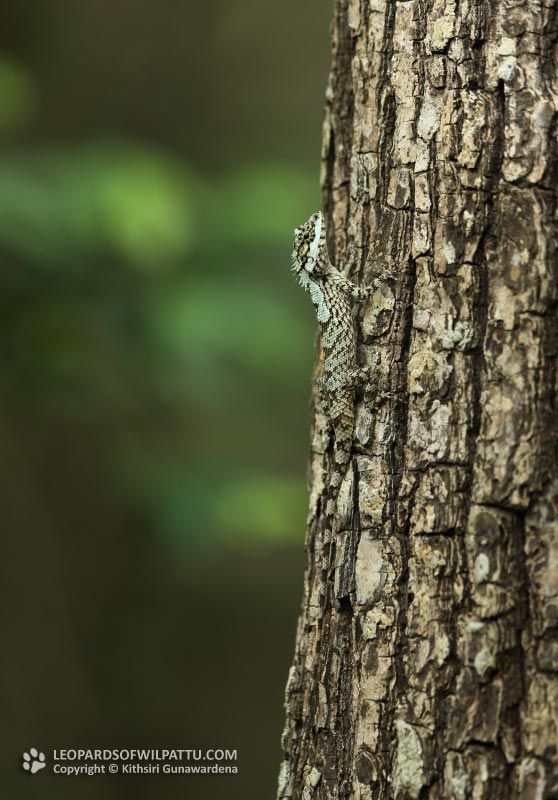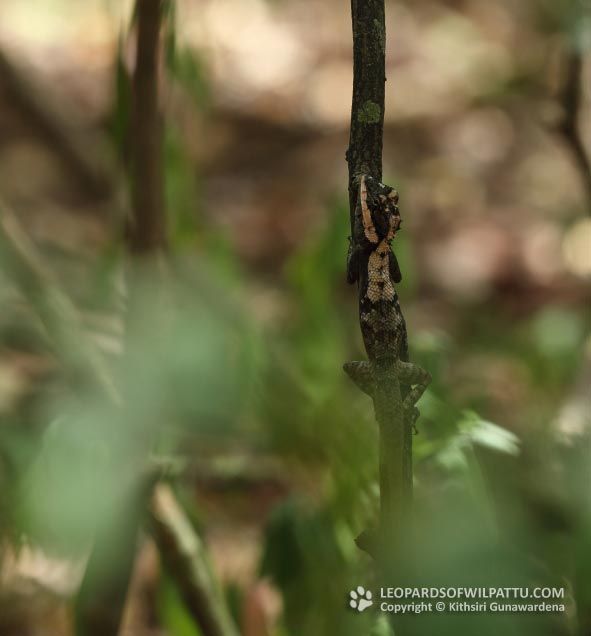
Reptiles ‹‹ Go Back
This colourful lizard is endemic to Sri Lanka and can be found in the monsoon forests and well-wooded areas including gardens in the north, east, some parts of the south and the Uva region. The conservation status of this species is regarded as “Near Threatened” (National Red List 2012) and it is protected under the Fauna and Flora Protection Ordinance as amended by Act No. 22 of 2009.
The highest altitude at which I have observed this species is at Koslanda at an elevation of 736 meters. I have also seen this species, mostly in the riverine forest, at Wasgomuwa, Udawalawa, Gal Oya and Yala National Parks and in the forested areas in Buttala, Karandugala, Nilgala and Wellawaya.
In Wilpattu I have observed this species, always on the trunks of large trees where there is shade, at Thammana Wala, between Kudapatessa and Kuruttupandi Villu, Panikkar Villu, Kumbuk Wila, Nelum Wila and Ochachppu Kallu. In Willpattu Those interested in observing this species should carefully observe the trunks of large trees, close to water bodies such as the resting area at Kumbuk Wila where this species is often seen.
As depicted in the photos these interesting lizards have a remarkable ability to change the colour of their lip, the middle area of the crown of its head, nape and the upper back area from pure white to deep red whithin seconds. Once I observed two males of this species at Kumbuk Wila in Wilpattu, in what appeared to be a territorial display where one animal had the above described areas of the body white with the rest of the upper body in black with the other having the corresponding areas in red with the rest of the upper body in black. On most occasions I have observed these lizards less than ten feet from the ground on the trunks of large trees but they are quire weary and upon detecting any danger would quickly move up the tree seeking safety. They are also capable of changing their striking colours to more drab browns to suit the bark of the trees they are found so that it becomes quite difficult to detect them. On two occasions, once at Nilgala and at Udawalawa, I observed the male of this species throwing caution to the wind and becoming foolishly bold when a female was in the vicinity. On both occasions the usually cautious male in striking colours stood its ground and continued its display while bobbing its head despite my approaching it and photographing it within touching distance.

